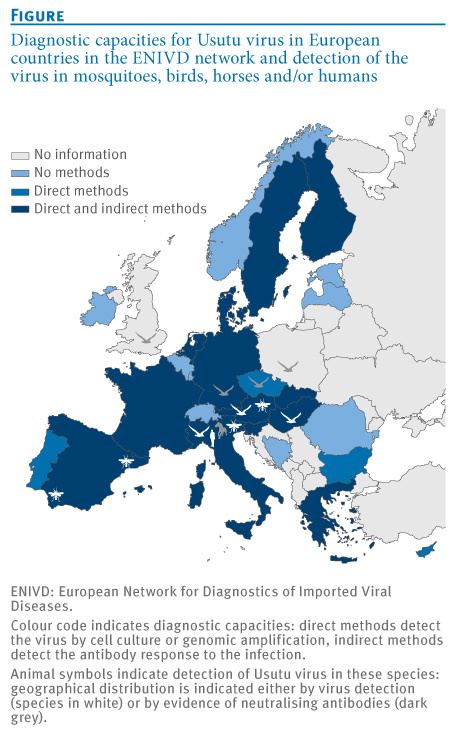Group Group IV ((+)ssRNA) Higher classification Flavivirus | Family Flaviviridae Scientific name Flavivirus: Usutu virus Rank Species | |
 | ||
Similar Flaviviridae, Culex pipiens, Kunjin virus, Culex modestus, Tick‑borne encephalitis virus | ||
Usutu virus (USUV) first identified in South Africa in 1959, is an emerging zoonotic arbovirus of concern because of its pathogenicity to humans and its similarity in ecology with other emerging arboviruses such as West Nile Virus. USUV is a flavivirus belonging to the Japanese encephalitis complex.
USUV has been reported from several African countries including Senegal, Central African Republic, Nigeria, Uganda, Burkina Faso, Cote d'Ivoire, and Morocco. Only two human cases have been identified in Africa, in 1981 and 2004, with one benign and one severe case described. The virus was identified for the first time outside of Africa in 2001 in Austria, where it caused significant mortality among Old World blackbirds in Vienna. The first human case outside of Africa was reported in Italy in 2009, where an immunocompromised patient was infected, causing encephalitis.
USUV's host range includes primarily Culex mosquitoes, birds, and humans. A 2008-2009 survey of mosquitoes and birds in Emilia-Romagna detected USUV in 89 Culex pipiens pools and in 2 Aedes albopictus pools. Twelve wild birds, primarily European Magpies (Pica pica), Hooded Crows (Corvus cornix), and Eurasian Jays (Garrulus glandarius), were determined to be USUV-positive. USUV detection in mosquito species confirms the role of Culex pipiens as the main vector and the possible involvement of Aedes albopictus in the virus cycle.
